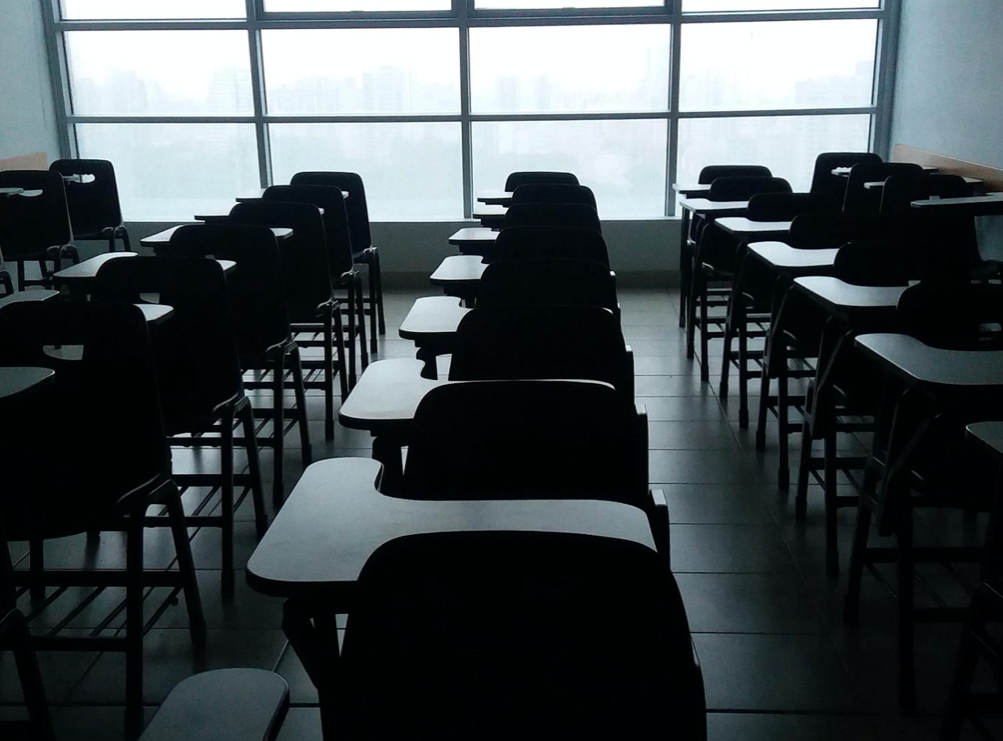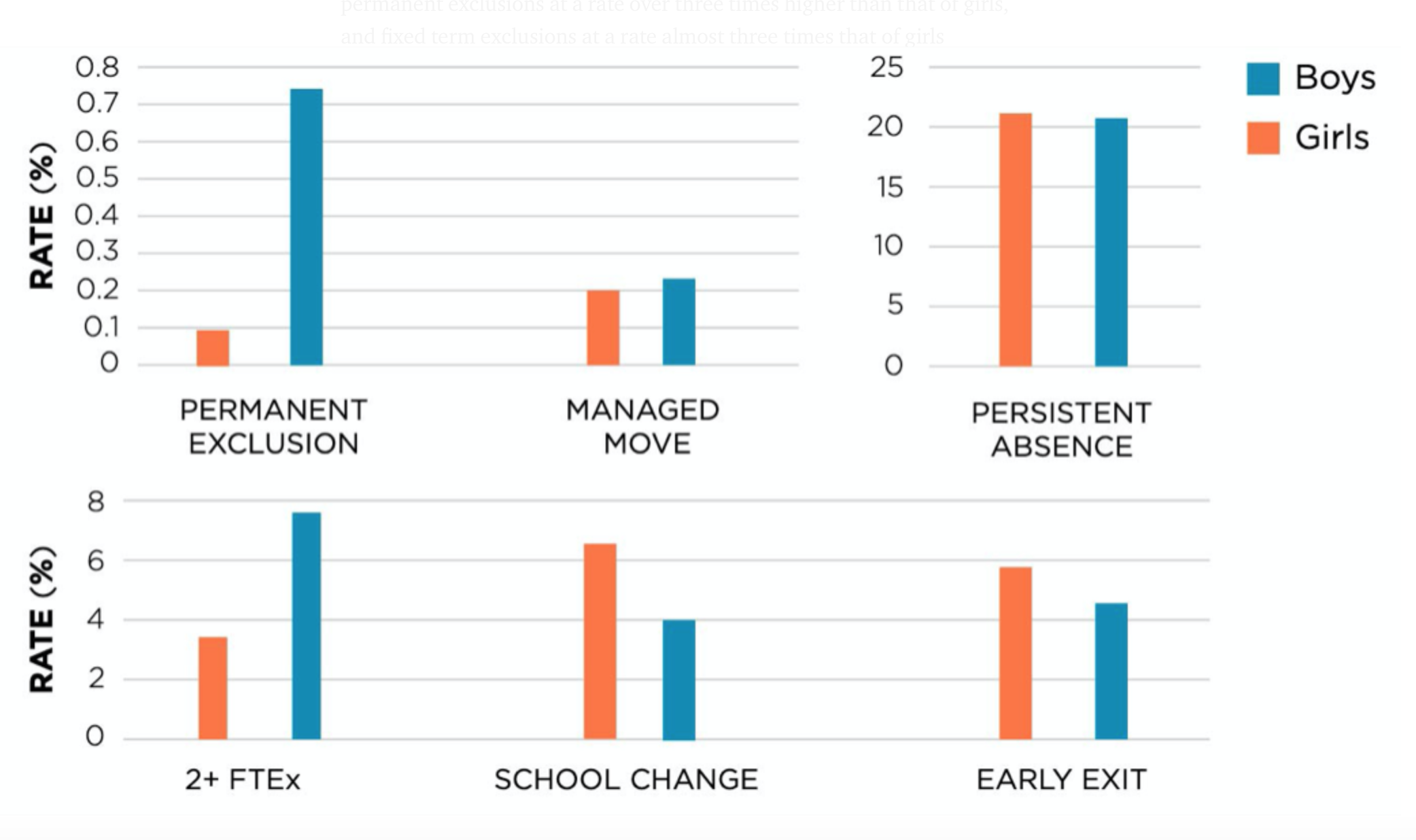
New findings from a report launched this week have implications for how we can maximise access to education for all pupils.
By Lucy Boddington, Analyst at Social Finance
Rising permanent school exclusion rates are headline news, with images of disenfranchised and disruptive boys drawing attention to a significant issue within our education system. However, findings published in a report published by the Impact Incubator at Social Finance, Maximising Access to Education: Who’s at risk of exclusion? suggest that it isn’t just boys who are being excluded. Our recent research shows that while boys are more likely to receive formal fixed or permanent exclusions, girls are at disproportionate risk of being excluded by other means, such as school moves.
Every day, a classroom of 40 children are told to permanently leave mainstream education: it would take one month for the average secondary school to empty. Last year’s Timpson Review of School Exclusion published these findings and, although these figures are not unprecedented, the fact that exclusion rates are 70% higher today than five years ago is concerning. Permanent exclusion has lifelong negative impacts on children’s education, health, employment and criminal exploitation, which cost the state an average of £370,000 per child (IPPR, Making the Difference, 2017).
Yet the problem may be even bigger and more complex than these statistics suggest. The current spotlight on exclusions is premised on partial data, an incomplete reflection of how young people are being excluded from accessing the education they deserve. Our recent data analysis, in collaboration with an innovative local authority, sought to get under the skin of what exclusion from school means for the children and young people who experience it, by looking beyond the exclusions formally issued by schools. Our results reveal that we risk building gender bias into any response based on traditional formal exclusions data alone.
Boys are more than twice as likely as girls to be formally excluded
Despite official exclusion rates of below the national and regional average, Cheshire West and Chester Council noticed a trend of increasing school exclusions, particularly around the transition to secondary school and around the time when pupils sit their GCSEs. This prompted them to want to understand who was missing out on accessing education locally and how. To explore this, we brought together data sets across early-help, children’s services and education, to establish a picture of over 10,000 secondary pupil records. This week we published the insights from our analysis, which continue to shape our ongoing work to develop a response to exclusion locally.
It’s widely held that school exclusions disproportionately impact boys. This holds true for formal school exclusions: nationally, boys receive permanent exclusions at a rate over three times higher than that of girls, and fixed term exclusions at a rate almost three times that of girls (Timpson Review, 2019). Indeed, in our data analysis we found that three-quarters of formal exclusions were given to boys. Boys were more than twice as likely to be formally excluded compared to girls, whether in the form of permanent, fixed-term, or multiple fixed-term exclusions.

Exclusion rate by gender
We have shown statistically that this cannot be explained by gendered differences in special educational needs, mental health needs or contact with children’s social care. Nor is it due to gendered differences in incidences of ‘violent’ behaviour. Further research should explore how societal gender norms and paternalistic decision-making shape gendered inequalities in exclusion from education (School exclusion: a literature review on the continued disproportionate exclusion of certain children, DfE, May 2019).
In addition, we should explore how gendered inequalities within access to other services, such as healthcare and criminal justice, and differential treatment in girls’ experiences of these, interact with children’s educational experiences. The disproportionate formal exclusion of boys is worthy of attention and needs more work to understand fully. However, it is far from the full story.
However, girls are more at risk of ‘invisible’ exclusions
You needn’t scratch far beneath the surface to reveal less visible kinds of exclusion. ‘Informal’ exclusions cover anything that stops a child from fully accessing school facilities, without being formally taken off the school register. It can occur within school, including isolation or reduced timetables, or outside of a school. For the purposes of our analysis we focused on the latter, specifically:
- Persistent absence, where a pupil missed at least 10% of school days;
- School moves, whether managed or unofficial;
- ‘Early exits’, when a pupil’s last census return was before the summer of year 11. This could be for several reasons including moving out of county, attending an educational setting out of county, being home educated, or the illegal practice of off-rolling.
Commonly cited statistics focus on official forms of fixed term or permanent exclusion, at the expense of these less obvious forms. This reductive reporting means that we are doubly failing girls, firstly by excluding them, and secondly by failing to notice.
We found evidence that girls are being disproportionately excluded in distinct ways, which are both less formalised and less visible. While rates of persistent absence and managed moves were similar for both boys and girls, rates of unofficial school moves and early exits were significantly higher for girls than boys. Girls were almost twice as likely as boys to experience a school change. There is no evidence that girls face lower levels of needs. In other words, the root causes of exclusions, and therefore social needs, are the same for both boys and girls. The systemic response, however, is not. Whilst boys are more likely to face formal exclusion, girls are being failed by the system and functionally excluded from school in other ways.



